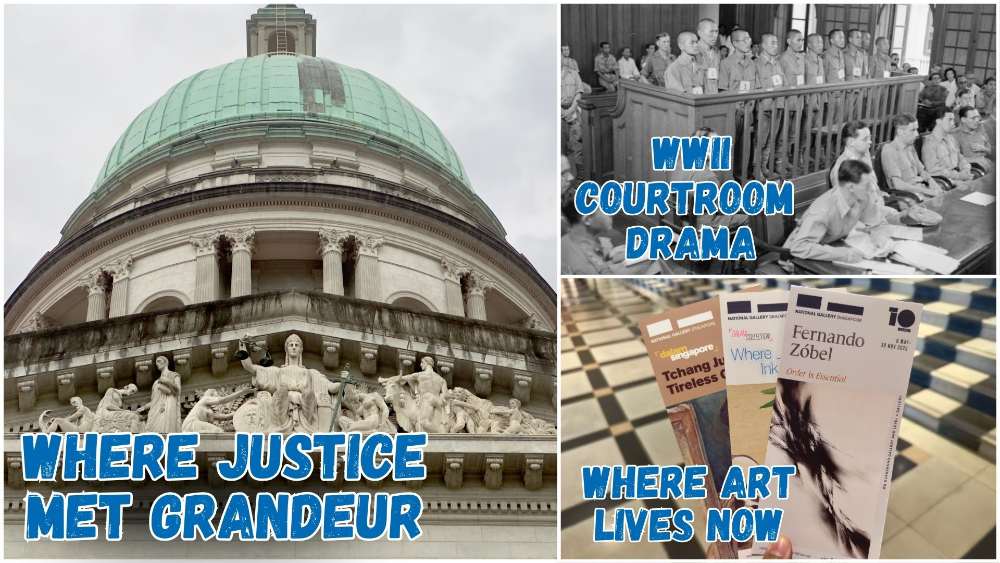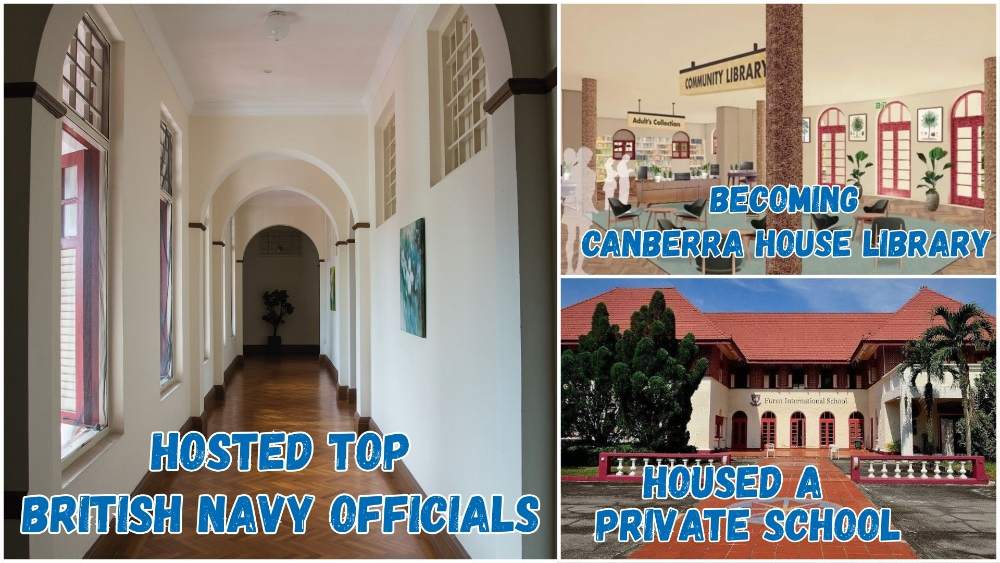This National Monument Once Tried War Criminals – Now It’s A Haven For Art Lovers
What is a National Monument? Who gazettes them? How many national monuments are there in Singapore? To date, the Preservation of Sites and Monuments, a division of National Heritage Board, has identified and gazetted 76 buildings, structures and sites of national significance as an integral part of Singapore’s built heritage.
And we're here to tell you all about them - one National Monument at a time!
You've probably passed by or stepped into more than a few of them without realising they were National Monuments: Al-Abrar Mosque, Asian Civilisations Museum, the Civilian War Memorial, Saint Andrew's Cathedral, the Esplanade Park Memorials, Fort Siloso on Sentosa - no need to plan an itinerary for friends visiting from overseas; just show them this article ✌️
In this edition, we throw the spotlight on a building that once served as the most important symbol of law and order in Singapore: the Former Supreme Court.
📍 Location
The Former Supreme Court was the 28th building to be gazetted as a National Monument, and is located right opposite the Padang (another National Monument). The MRT stations nearest to the Former Supreme Court are City Hall or Raffles Place.
📅 Significant dates
Dates built:
- April 1937-August 1939: Former Supreme Court (part of the National Gallery today)
- January 2011-November 2015: National Gallery
Milestones:
- 3 Aug 1939: Former Supreme Court (vacated in 2005)
- 24 Nov 2015: National Gallery
Date gazetted: 14 Feb 1992
📜 History
Before the Former Supreme Court was built, the Supreme Court was initially located in the Old Parliament House (today's Arts House) and later in the Former Empress Place Building (currently the Asian Civilisation Museum).
In 1934, the colonial government acquired the site of Hotel de l’Europe, a prestigious hotel that had been forced to close in 1932. The hotel building was subsequently demolished to make way for the construction of the Former Supreme Court, which began in April 1936.
However, the project faced delays due to shipping congestion and Britain's rearmament efforts in anticipation of the impending World War II, which disrupted steel deliveries. After three years of construction, the building was officially opened on 3 Aug 1939 by Sir Shenton Thomas, Governor of the Straits Settlements.
The foundation stone of the building was laid on 1 Apr 1937, marking a significant milestone in its construction. To commemorate the occasion, a time capsule was placed beneath the stone, containing six Singapore newspapers dated 31 Mar 1937, along with currency from the Straits Settlements. This time capsule is intended to be retrieved in the year 3000, when the foundation stone will be shattered to reveal its contents.
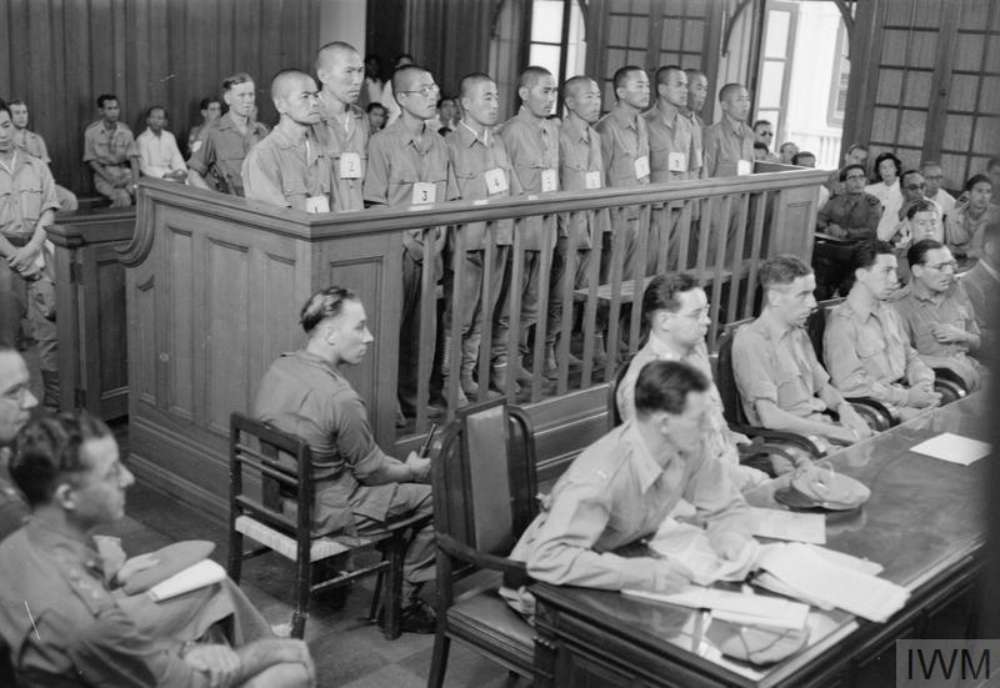 Post WWII, the building was the site of war crime trials of members of the Japanese military in 1946. | IMAGE: WIKIMEDIA COMMONS/@VASEY, IMPERIAL WAR MUSEUMS
Post WWII, the building was the site of war crime trials of members of the Japanese military in 1946. | IMAGE: WIKIMEDIA COMMONS/@VASEY, IMPERIAL WAR MUSEUMS
Following the official signing of the Japanese surrender in the adjacent Former City Hall (then the Municipal Building) on 12 Sep 1945, a grand victory parade was held on the Padang in front of both the Municipal Building and the Supreme Court. This momentous event marked the end of the Japanese Occupation in Singapore (1942-1945), celebrating the nation’s liberation.
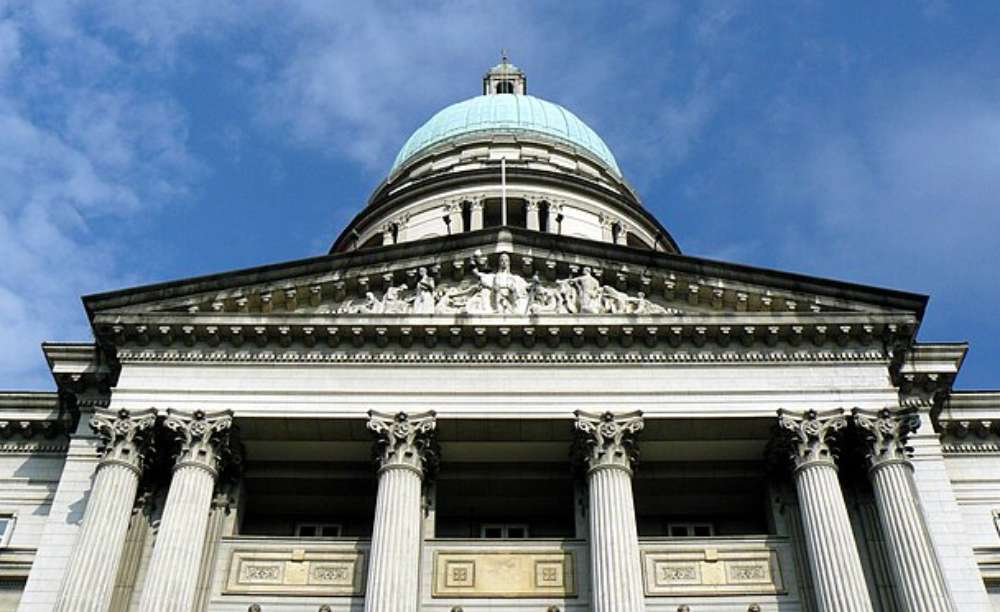 IMAGE: WIKIMEDIA COMMONS/@KOK LENG YEO
IMAGE: WIKIMEDIA COMMONS/@KOK LENG YEO
📐 Design and architecture
Frank D. Ward, Chief Architect of the Public Works Department, was tasked with designing the building and supervising its construction. Much like the Former City Hall, the Former Supreme Court was built in the Neoclassical style, which was the preferred architectural style for civic buildings across the British Empire in the 1930s.
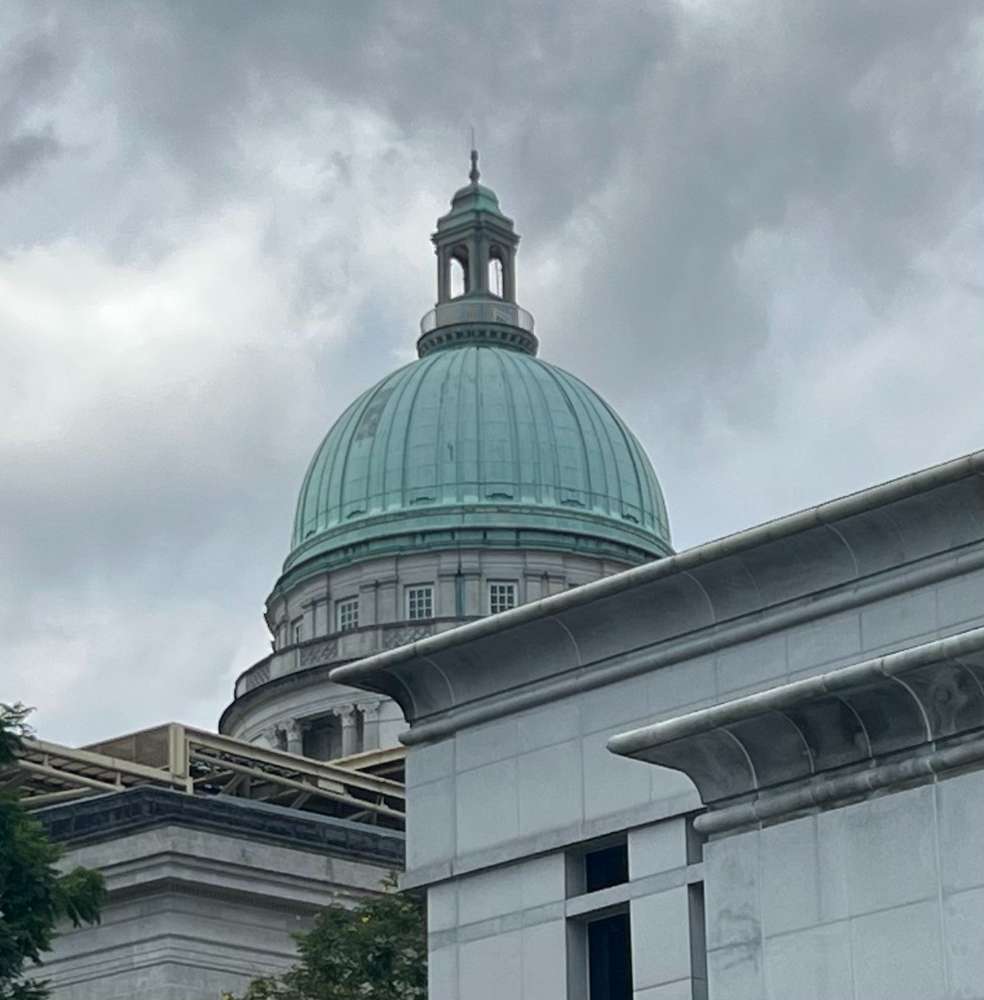 IMAGE: NG KAI
IMAGE: NG KAI
The large copper-green dome resembles the dome of Saint Paul’s Cathedral in London and has since become an icon of Singapore’s Civic District.
 IMAGE: WIKIMEDIA COMMONS/@SENGKANG
IMAGE: WIKIMEDIA COMMONS/@SENGKANG
The majestic structure is elevated on a plinth (a square base supporting a column) and features a spacious porte-cochère (a grand carriage porch). Its façade is dominated by an imposing row of Corinthian columns, adding to its grandeur. Above the main entrance, a frieze (a broad horizontal decorative band of sculpted or painted decoration) showcases carvings of Singapore’s early years, designed by George T. Squires.
A key highlight of the building’s interior is its superior gypsum plaster finish, skilfully crafted by Chinese artisans who had sought refuge in Singapore during the Second Sino-Japanese War (1937–1945). These craftsmen, trained in European plastering techniques in Shanghai, brought an exceptional level of detail and artistry to the main hall and cornices (decorative trims located at the meeting point between walls and a roof or ceiling).
Despite its grandeur, efforts were made to keep construction costs low. Traditional marble panelling, flooring, and decorative elements – commonly found in such stately buildings – were deliberately omitted. Instead, locally made Art Deco (short for the French Arts décoratifs) rubber tiles, designed to mimic the look of marble, were used to line the corridors. Beyond cost efficiency, these rubber tiles also served a practical purpose: they absorbed footsteps and reduced noise, ensuring that court proceedings remained undisturbed.
 IMAGE: WIKIMEDIA COMMONS/@KOK LENG YEO
IMAGE: WIKIMEDIA COMMONS/@KOK LENG YEO
One of the most remarkable features of the building’s façade is the set of sculptures that represent the Allegory of Justice. Nestled within the tympanum (the semi-circular or triangular decorative wall surface over an entrance), this masterpiece was created by Italian sculptor Cavaliere Rudolfo Nolli, who also contributed the columns and granolithic stone cladding for the Former City Hall.
At the centre, Lady Justice is depicted seated upon a throne, firmly holding the symbols of justice in each hand: a sword and a weighing scale. On either side of her, a pair of kneeling figures are shown: one pleading for protection, while the other expresses gratitude for the benefits of justice.
On the left size of the frieze, figures representing deceit and violence are placed alongside legislators holding books, symbolising the law. On the right, a bull, an emblem of prosperity and wealth, stands next to two children embracing sheaves of ripened wheat, representing abundance that arises from justice and law.
From Courtroom to Cultural Icon: The Gallery Celebrates 10 Years
To mark its 10th anniversary, the National Gallery Singapore, housed within the Former Supreme Court and City Hall, will throw a massive birthday bash on 15 and 16 Nov.
You can expect free entry to all exhibitions, celebrity-led art tours, edible art cakes, a pop-up market of local brand collabs, and even an after-hours rave at the Supreme Court Terrace.
It’s the perfect time to see how this once solemn courtroom has become one of Singapore’s most vibrant cultural spaces 🥳🎉
🕖 Opening hours
Open 10am to 7pm daily.
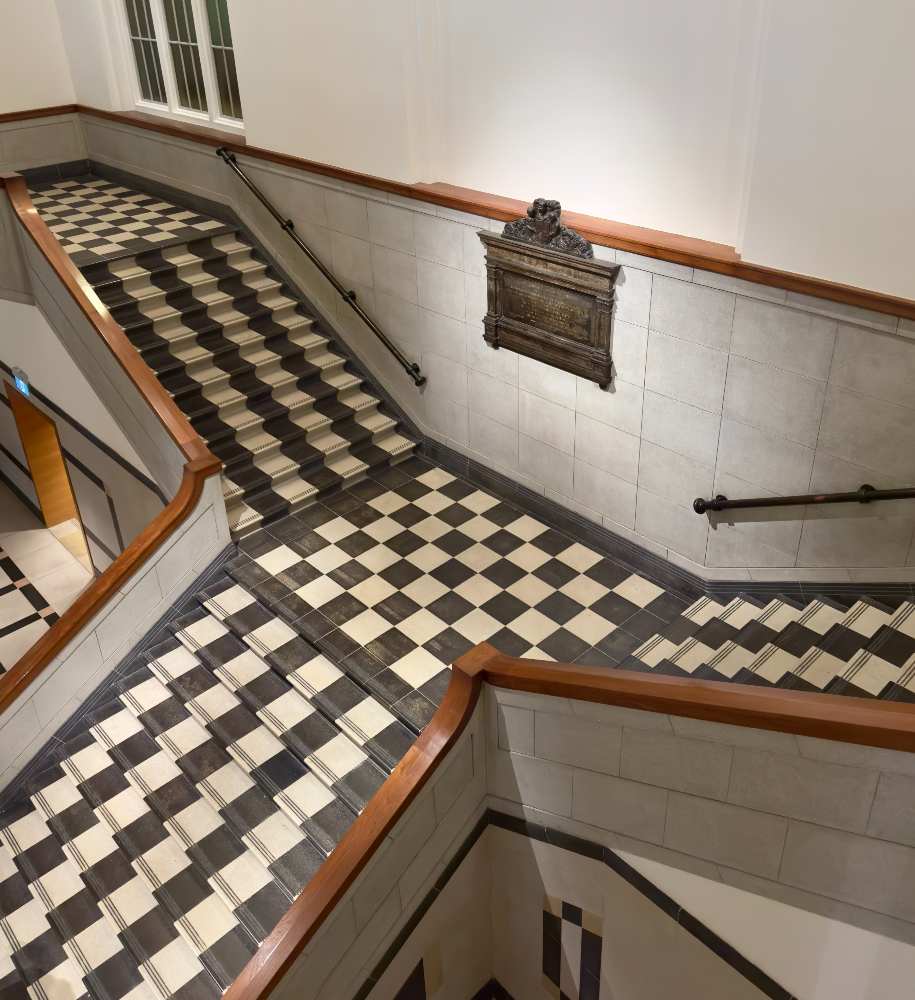
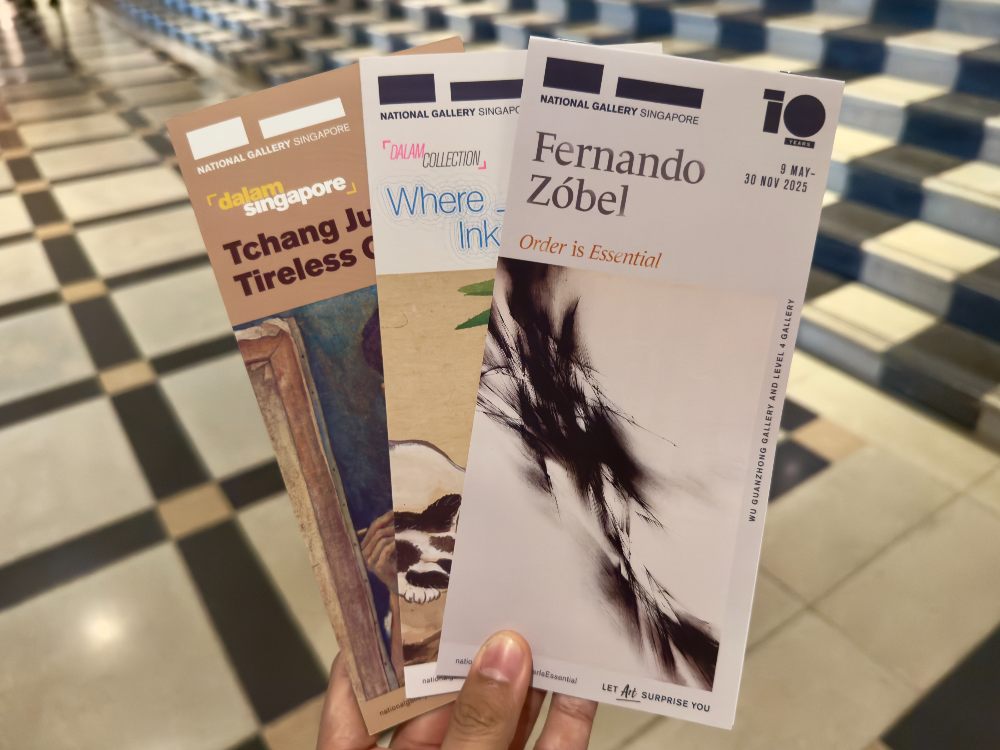 IMAGES: NG KAI
IMAGES: NG KAI
🎟️ Admission
General admission is free for Singaporeans and Permanent Residents, with ticketed tours and exhibitions available as well. Find out more here.
For the latest updates on Wonderwall.sg, be sure to follow us on TikTok, Telegram, Instagram, and Facebook. If you have a story idea for us, email us at







